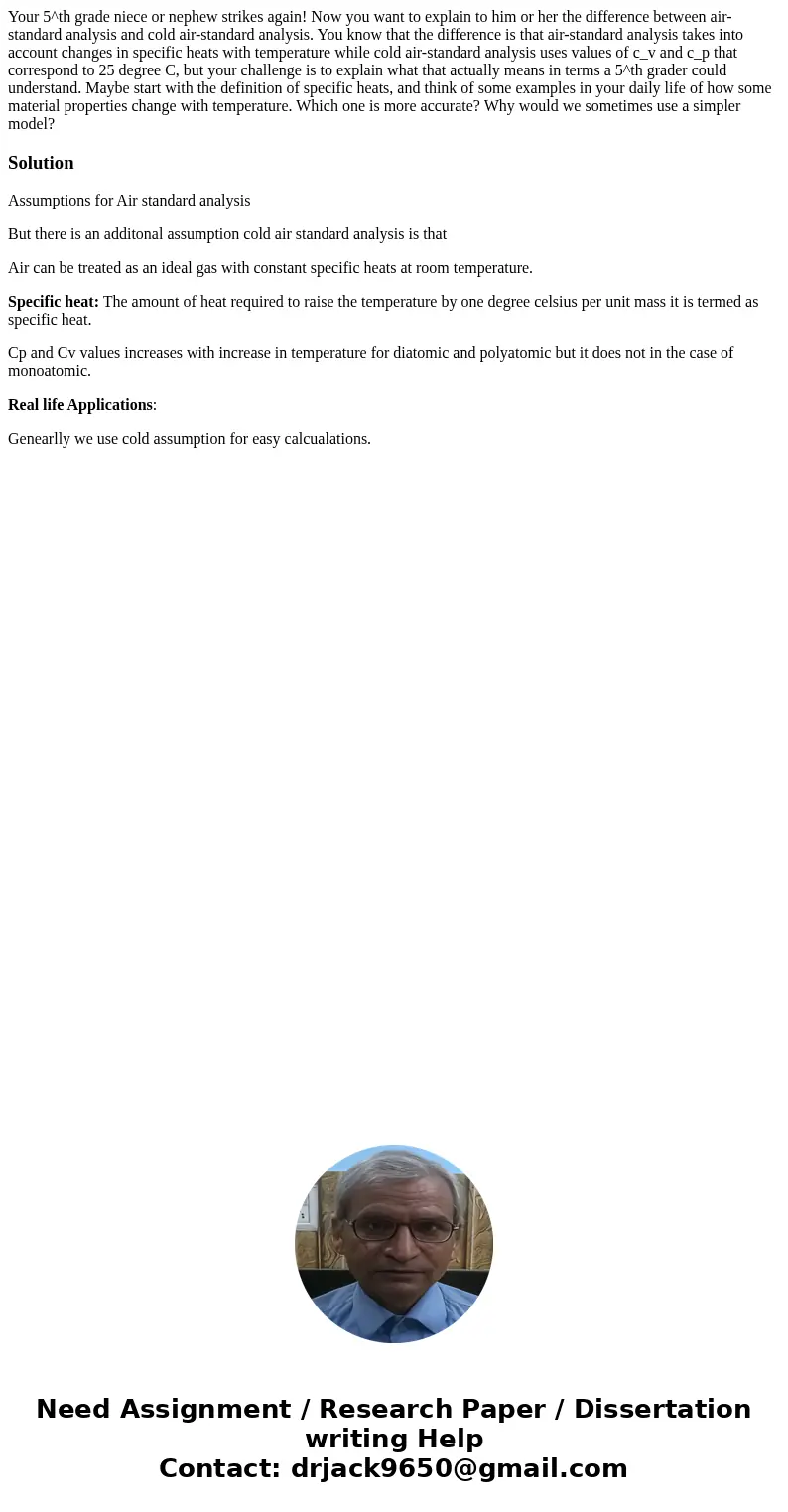Your 5th grade niece or nephew strikes again Now you want to
Your 5^th grade niece or nephew strikes again! Now you want to explain to him or her the difference between air-standard analysis and cold air-standard analysis. You know that the difference is that air-standard analysis takes into account changes in specific heats with temperature while cold air-standard analysis uses values of c_v and c_p that correspond to 25 degree C, but your challenge is to explain what that actually means in terms a 5^th grader could understand. Maybe start with the definition of specific heats, and think of some examples in your daily life of how some material properties change with temperature. Which one is more accurate? Why would we sometimes use a simpler model?
Solution
Assumptions for Air standard analysis
But there is an additonal assumption cold air standard analysis is that
Air can be treated as an ideal gas with constant specific heats at room temperature.
Specific heat: The amount of heat required to raise the temperature by one degree celsius per unit mass it is termed as specific heat.
Cp and Cv values increases with increase in temperature for diatomic and polyatomic but it does not in the case of monoatomic.
Real life Applications:
Genearlly we use cold assumption for easy calcualations.

 Homework Sourse
Homework Sourse